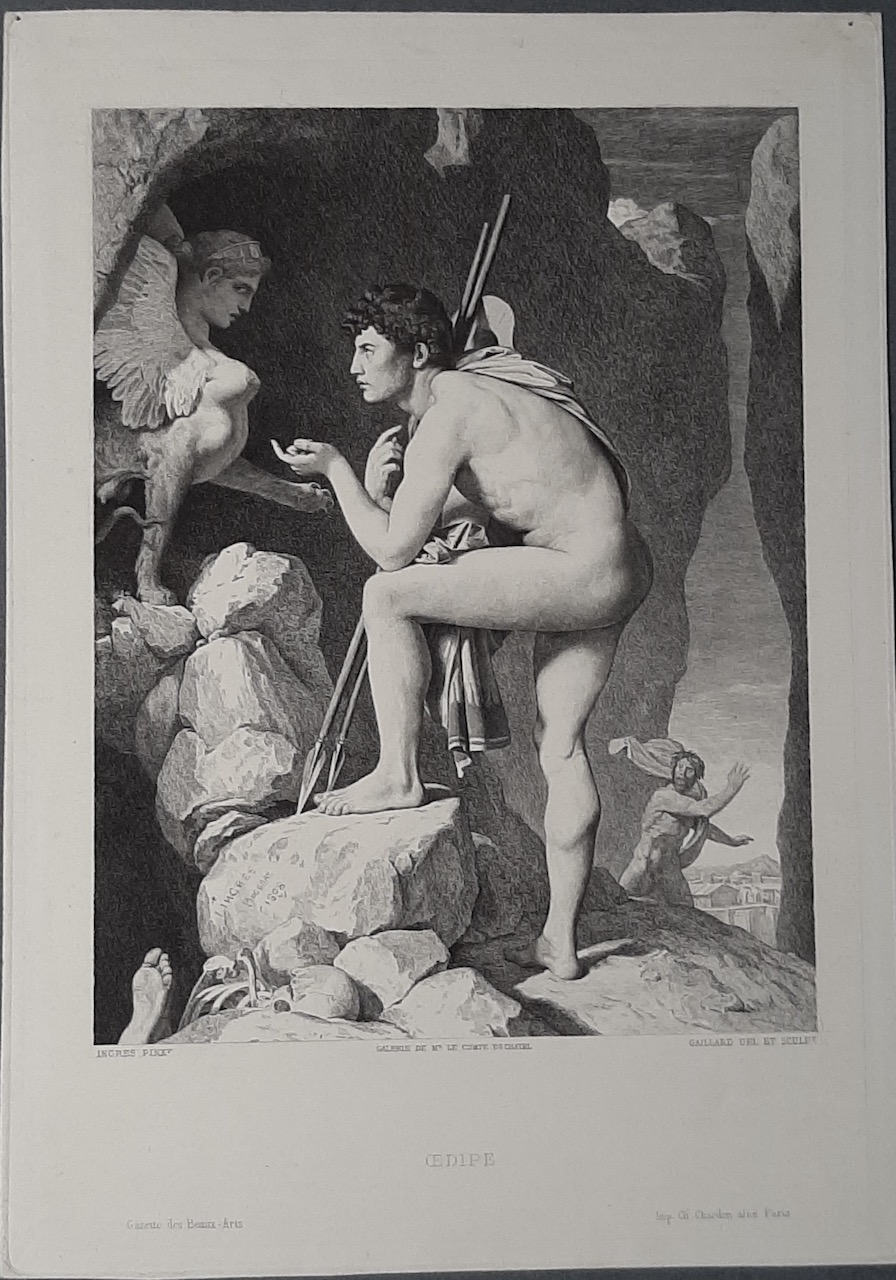Ferdinand Gaillard (1834-1887)
Ferdinand Gaillard (1834-1887)
Ferdinand Gaillard: Oedipus
Etching, 1867
Description
Ferdinand Gaillard (1834-1887)
Ferdinand Gaillard: Oedipus
Etching, 1867
Print on wove paper. Interpretation etching by Ferdinand Gaillard after the oil painting by Jean-Auguste-Dominique Ingres (1780-1867) “Oedipus and the Sphinx”, 1808, published by “La Gazette des Beaux Arts” in September 1867.
Dimensions at the plate mark : H. 255 mm x W. 180 mm. Very thin margins.
Background:
Claude-Ferdinand Gaillard or Ferdinand Gaillard – he signs thus or “F. Gaillard”. This is a French engraver, painter, illustrator and writer. Ferdinand Gaillard is the son of a blacksmith, originally from Franche-Comté. He was first a student of the Brothers of the Gros-Caillou and of the School of Drawing of the School of Medicine. In 1853 he entered the Ecole des Beaux-Arts under Léon Cogniet. Lecouturier taught him the art of engraving to which he devoted himself all his life. In 1856 he won the Prix de Rome for engraving. As is customary, he travels to Italy. He spent five years in Tuscany, Milan, Venice and Naples. Later Gaillard became a tertiary of the order of St. Francis.
As an Engraver :
He reproduced mostly ancient paintings and sculptures, engravings that made his reputation. Henri Beraldi catalogued Gaillard in Les Graveurs du XIXe siècle, VI (84 nos). In 1860, he began to exhibit his original engravings in Paris, mainly in drypoint. This earned him a lot of criticism – especially from the Gazette des beaux-arts. But the artist persists and ends up producing, as a good burinist, a characteristic size. He refused to follow fashion and even joined the Salon des Refusés in 1863, where he was spotted by the critic Philippe Burty. He executed very realistic portraits of personalities. His Dom Prosper Guéranger is one of his most famous engravings, not to mention Man with a Carnation after Jan van Eyck. In 1886, he became president of the Society of Engravers. From 1868 on, Gaillard regularly sent painted portraits to the Salons. In particular, he sent this Monseigneur de Ségur, which he engraved with etching and for which we know painted studies for the head, cassock and hand. He was present at the Universal Exhibition of 1878 both as a painter and as an engraver.
As a Teacher:


Reviews
There are no reviews yet.